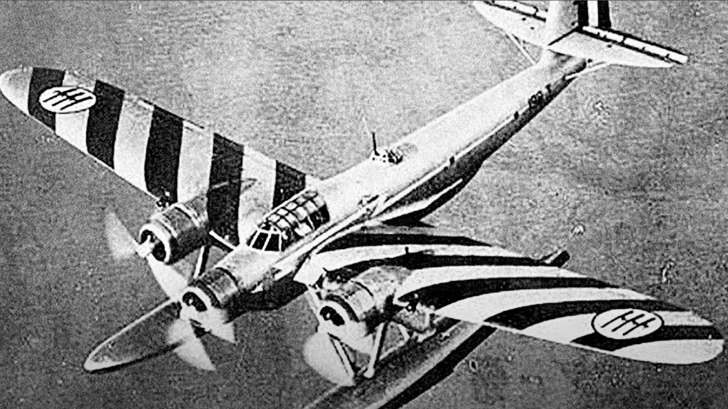The CANT Z.506 was a multi-role aircraft produced by the Italian manufacturer Cantieri Aeronautici e Navali Triestini during the 1930s and 1940s. Here are ten facts about this unique aircraft:
-
Originally designed as a commercial airliner but was adapted for military use during WWII
Its military variant proved to be a respectable floatplane that served its purpose well. Before the war, it served as a transport and postal aircraft with an Italian airline. Despite its wooden structure, it was still considered one of the best floatplanes ever built due to its many capabilities and ability to operate in very rough seas.
-
The aircraft had a distinctive three-engine configuration
One thing that made the Airone stand out was its tri-engine design. The floatplane had one engine on the nose and two more fixed on the wings. Meanwhile, its fuselage sat on top of reinforced struts attached to two long floats, allowing it to take off and land more easily.
-
It had a maximum speed of 220 mph, which was considered fast for its time
The Airone performed the best when it was flown by Italy’s ace pilot, Mario Stoppani. He broke records for altitude, distance, and speed from 1936 to 1938 after setting a record top speed of 191.539 mph for 3,107 miles and a top speed of 200.118 mph for 621 miles.
-
The aircraft had a range of 1,242 miles, making it suitable for long-range missions
Z.506s were powered by three Alfa Romeo 126 R.C.34 radial piston engines with a rated output of 750 hp each. This powerplant enabled the aircraft to reach top speeds of 226 mph and a maximum ceiling of 26,247 feet.
-
The Italian Air Force used it for a wide variety of roles
Not only did the Airone serve its commercial purpose well as an aircraft, but it was also used as a reconnaissance and lightweight bomber by the Italian and German militaries. The aircraft also filled in for transport, search and rescue, and anti-submarine warfare.
-
The Z.506 was equipped with four machine guns
A single 12.7 mm machine gun was fitted on its dorsal turret, while a 7.7 mm can be found on the ventral side. In addition, two more 7.7 mm is installed on the beam fuselage side of the aircraft. It also had a bomb-carrying capacity of 2,600 lbs or for a 1,800-lb torpedo.
-
It was used by the Spanish Air Force during the Spanish Civil War
Its first application in battle was as a reconnaissance aircraft and torpedo bomber in the Spanish Civil War.
-
Only one surviving model left
The only surviving Z.506 model now stays at the Italian Air Force Museum in Vigna di Valle. It was produced in 1941 and was assigned to the 186 Squadriglia when it first carried out its mission on January 12, 1942.
-
The CANT Z.506 was also used by Germany
Italy joined the Axis powers in 1940, incorporating nearly 92 Airones into the Italian Navy. During the course of the war, about 70 of these floatplanes would fall into the hands of the Allies after Italy’s surrender.
-
Overshadowed by other aircraft of its time
Despite its capabilities, the CANT Z.506 was largely overshadowed by other aircraft of its time, such as the British Short Sunderland and the American Consolidated PBY Catalina. After all, the British and American floatplanes were better equipped and had a better track record than the Z.506.



